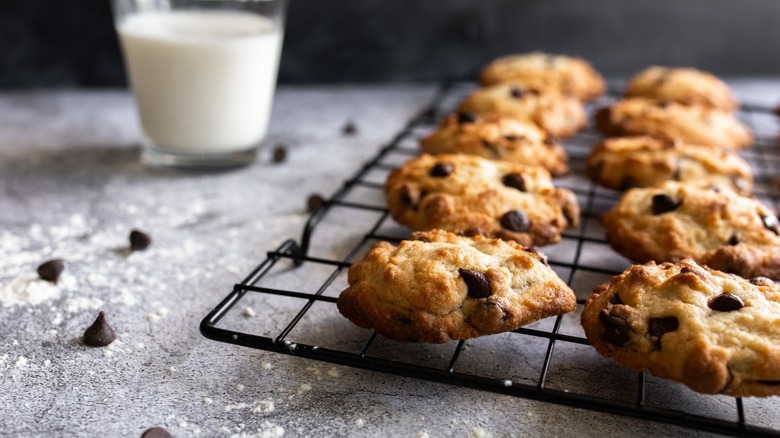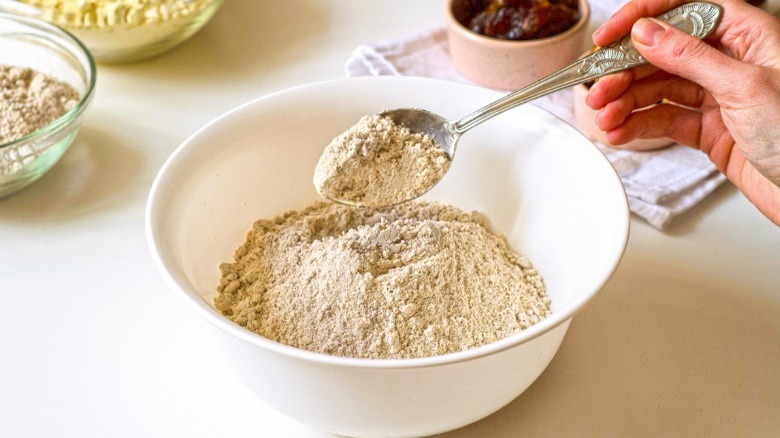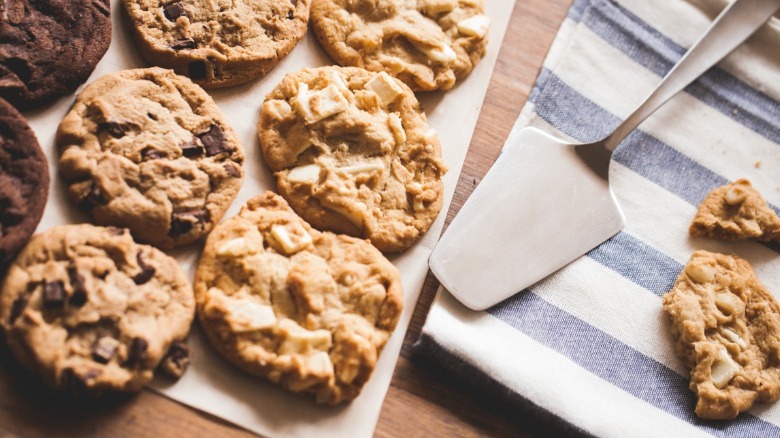The Extra Step You Should Take For Gluten-Free Cookies
Gluten-free baking is never as straightforward as just swapping out regular flour for the gluten-free version. Because baking in general is all about chemistry, making your favorite recipes without gluten often requires playing with amounts of certain ingredients as well as the processes that go into getting that desired final product. One baked good that can be particularly tricky to make gluten-free are cookies, but you can take one super simple step with the dough to increase your chances of the tastiest result.
Some cookie dough requires chilling before it's scooped and baked, but for gluten-free cookie dough, it's all about the resting. Cookie dough that contains gluten-free flour needs to sit on the counter before baking because the hydration that occurs during this resting period is super important to getting the best final result. The best practice is to leave the dough for at least 30 minutes before you form and bake the cookies.
Why does gluten-free flour need to be hydrated?
Obviously gluten-free flour substitutes deserve a chance in your favorite baked goods, but the major qualm many have with them is that they can turn out a lot drier than their glutinous counterparts. Dryness in gluten-free goodies is often due to the fact that the flours they're made with are a lot higher in starches and rice flour. These take more time to absorb liquid than traditional flour. Therefore, avoiding sandy cookies sans gluten comes down to allowing that flour a little bit more time to hydrate before putting it in the oven to bake.
This hydration is actually even more important for cookie recipes than it is for other gluten-free baked goods. Treats like cookies and biscuits often contain butter, but not as many liquid ingredients as cake or brownie batters. Liquids like milk or oil would normally quicken that absorption process. Because cookie dough doesn't normally contain these ingredients, it needs to rest longer to allow everything to get nice and hydrated. As it turns out, the batter for high-moisture bakes like cakes should never be rested because the baking powder it contains starts to react as soon as it comes into contact with liquids.
More gluten-free baking tips
Soft and chewy gluten-free chocolate chip cookies and other gluten-free baked treats are within your grasp — as long as you follow some key rules. A big thing to keep in mind with gluten-free goodies is that the baking times called for in the recipes are not always 100% accurate. Additionally, the classic toothpick method for determining if your cakes or muffins are done may not be as effective with gluten-free bakes because these kinds of treats can often appear uncooked even when they are actually done. To make sure your baked treats are good to go, use an oven timer and make sure your oven is properly heating and calibrated.
Additionally, gluten-free flours necessitate a little more effort when measuring ingredients than you might expect because they're much finer than traditional flours. The best practice is to use a scale to measure out gluten-free flour to make sure you're using the right amount. If you simply scoop it into a measuring cup, you may not be getting an accurate measurement due to an uneven distribution of the flour. If you don't have access to a scale, the best option is to place your cup on a flat surface and gradually add the flour. As you add, disperse it throughout the cup to make sure it's as evenly distributed as possible.



